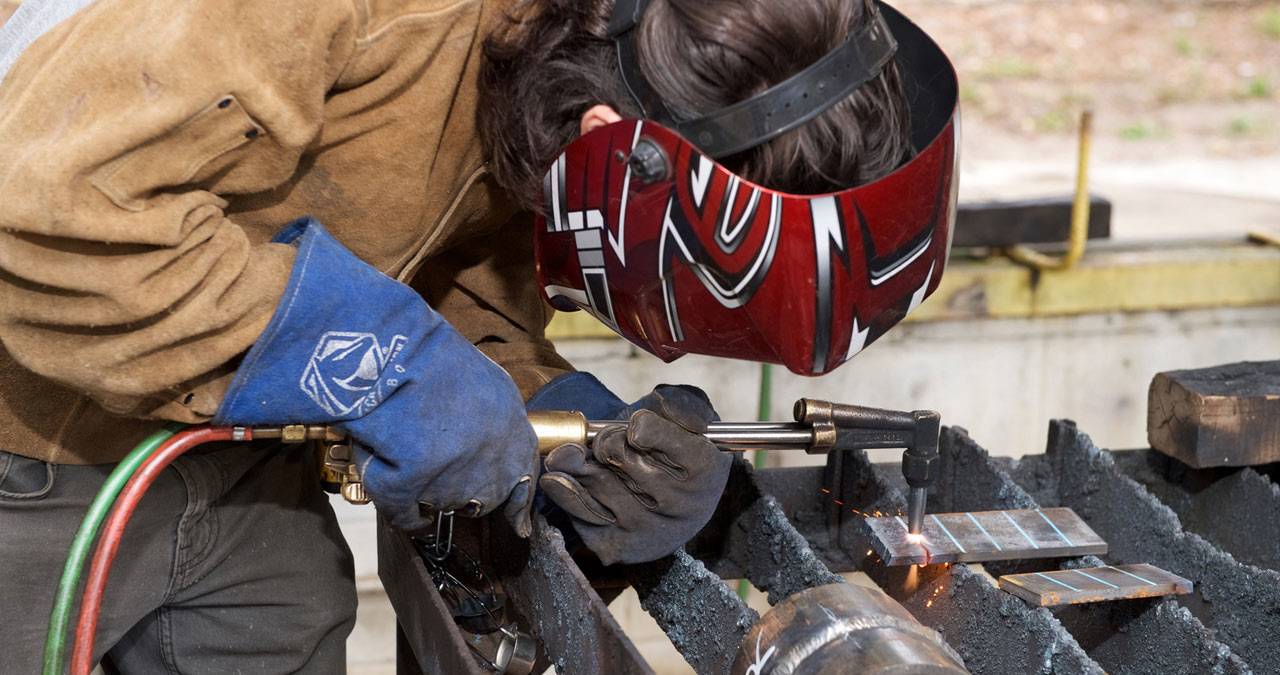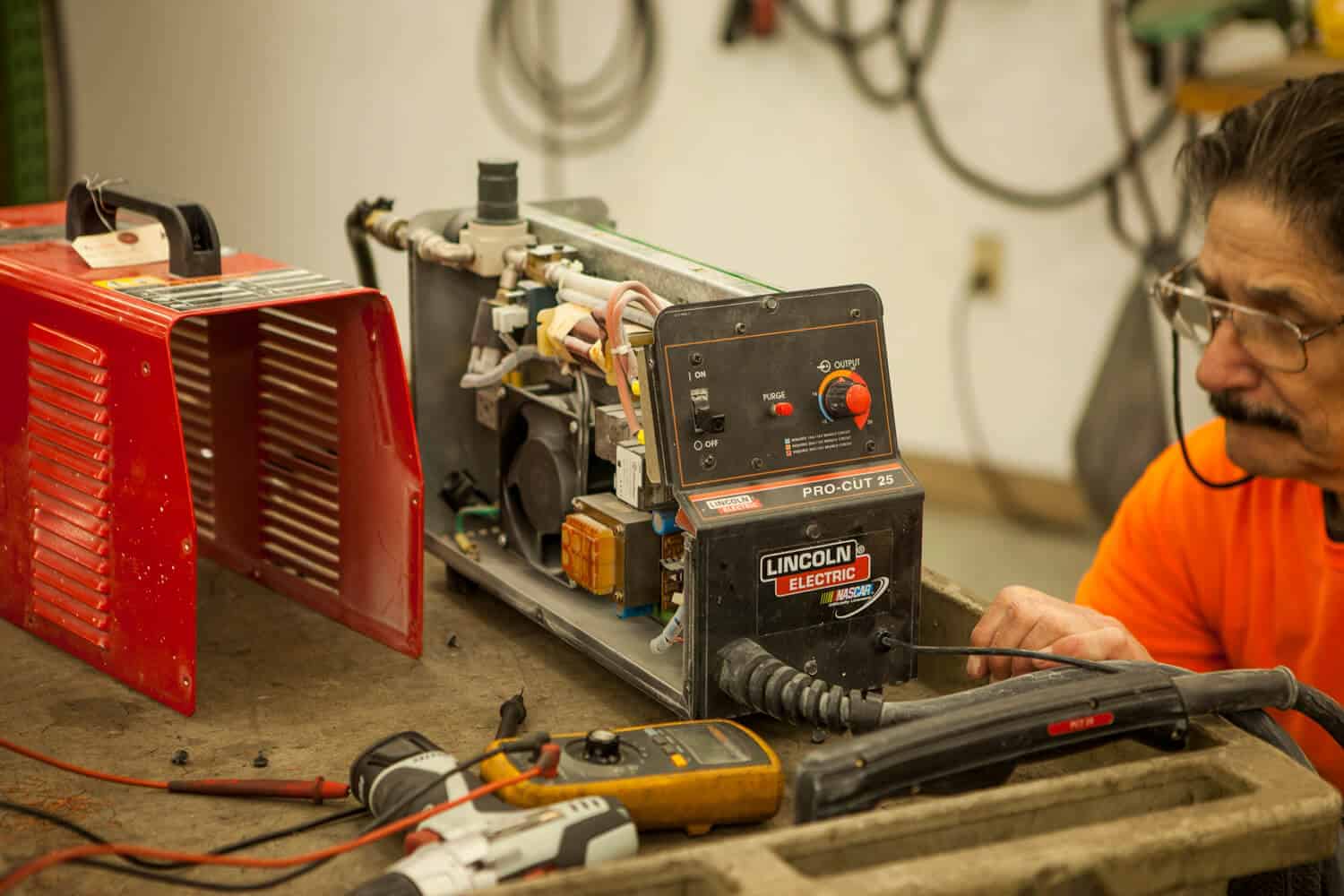Why welds crack and how Montana Mobile Welding and Repair solves them
All Concerning Welding: Key Insights Into Techniques and Best Practices for Success
Welding includes a selection of techniques, each matched for specific materials and applications. Recognizing these approaches, such as GMAW, SMAW, and TIG, is vital for achieving optimal results. The ideal devices and safety and security techniques can not be ignored. As prep work and troubleshooting play vital functions in the welding process, mastering these aspects can greatly enhance the quality of the final item. What are the key variables that guarantee an effective weld?
Comprehending Different Welding Methods
Welding strategies incorporate a variety of methods, each fit to certain applications and products. Among one of the most typical techniques are Gas Steel Arc Welding (GMAW), Protected Steel Arc Welding (SMAW), and Tungsten Inert Gas Welding (TIG) GMAW, additionally called MIG welding, is preferred for its rate and convenience, making it optimal for slim products. SMAW, or stick welding, is preferred for its simplicity and efficiency in exterior environments, specifically with thicker steels. TIG welding uses accuracy and control, making it appropriate for complex work and non-ferrous steels (Belgrade Fabrication). Each technique has its one-of-a-kind advantages and considerations, permitting welders to select the very best technique based on the job's needs, product type, and desired end results. Comprehending these techniques is crucial for successful welding
Necessary Welding Equipment and Tools
While various welding methods require certain skills, the ideal equipment and tools are equally vital for accomplishing top quality outcomes. Crucial welding devices consists of welding machines, which differ depending upon the method-- such as MIG, TIG, or stick welding. Protective gear, including aprons, safety helmets, and gloves, assurances safety and convenience during the procedure. Additionally, fixtures and clamps assist protect materials in area, guaranteeing precision in welds. Consumables like welding poles, cord, and securing gas are additionally important parts that influence the quality of the weld. Devices such as grinders and cutters assist in surface prep work and post-weld finishing, contributing to an expert end result. Purchasing high-quality devices eventually boosts the effectiveness and effectiveness of welding jobs.
Safety Practices in Welding
Proper safety methods are vital in the welding industry to protect employees from potential dangers. Welders must use proper individual safety tools (PPE), including safety helmets with proper shading, gloves, and flame-resistant garments. Adequate ventilation is important to lower exposure to harmful fumes and gases produced during the welding procedure. Additionally, workers should be learnt the correct handling of welding tools to stop crashes. Fire security actions, such as keeping flammable materials far from the welding area and having fire extinguishers conveniently offered, are needed. Regular evaluations of devices and work spaces can aid determine prospective dangers prior to they lead to mishaps. By adhering to these safety practices, welders can produce a safer working atmosphere and decrease dangers related to their profession.
Readying Products for Welding
Preparing products for welding is an essential action that considerably influences the high quality and integrity of the final product (Montana Mobile Welding and Repair Belgrade Welding). Correct prep work entails cleaning up the surface areas to get rid of contaminants such as oil, rust, and dirt, which can endanger the weld. Strategies such as grinding, fining sand, or making use of solvents are commonly employed to achieve a clean surface. Additionally, making sure that the products mesh comfortably is necessary; spaces can result in weak welds. It's also vital to take right into account the alignment and positioning of the components, as this will influence the ease of welding and the final result. Ultimately, picking the ideal filler product and ensuring compatibility with the brazing welding base steels is necessary for accomplishing strong, durable welds
Tips for Getting High-Quality Welds
Achieving high-grade welds needs attention to detail and adherence to best methods throughout the welding process. Correct joint preparation is essential, making certain surfaces are clean and cost-free from pollutants. Choosing the suitable filler product and welding strategy based on the base steels is vital for perfect bonding. Keeping consistent traveling speed and angle while welding can advertise and avoid defects harmony. Additionally, regulating warm input is necessary; extreme warm can result in warping and damaged joints. If required, consistently examining the welds during the procedure enables for instant adjustments. Utilizing ideal post-weld treatments, such as cleaning and tension alleviation, can boost the toughness and integrity of the weld, inevitably making sure an effective end result.
Fixing Typical Welding Issues
Welding often provides obstacles that can impact the quality and stability of the end product. Common issues such as porosity, irregular weld grains, and overheating can develop, each requiring particular troubleshooting techniques. Understanding these issues is necessary for welders to enhance their skills and attain suitable results.
Porosity Troubles Clarified
Porosity can often be overlooked, it remains a critical problem in welding that can jeopardize the stability of an ended up item. Porosity refers to the presence of small gas pockets within the weld bead, which can lead and compromise the joint to early failing. This issue usually develops from impurities, wetness, or incorrect shielding gas insurance coverage during the welding process. To mitigate porosity, welders must verify that the base materials are dry and tidy, make use of suitable protecting gases, and keep constant welding criteria. On a regular basis inspecting the tools and environment can additionally assist identify prospective problems prior to they show up in the weld. Resolving porosity efficiently is essential for attaining solid, durable welds that satisfy high quality standards.

Irregular Weld Beans
Inconsistent weld grains can substantially influence the quality and strength of a finished item. Numerous variables add to this concern, consisting of inappropriate travel speed, incorrect amperage settings, and inconsistent electrode angles. When the welder moves as well rapidly, go to this site a grain might show up narrow and do not have infiltration, while relocating also slowly can create excessive build-up. In addition, utilizing the wrong amperage can cause either damaging or extreme spatter, both of which concession weld honesty. The welder's technique, such as irregular lantern movement, can also lead to irregular grain appearance. To minimize these troubles, welders must concentrate on preserving stable, regulated activities and guaranteeing appropriate devices setups to accomplish harmony in their welds. Consistency is crucial to accomplishing trustworthy and solid welds.
Getting Too Hot and Bending Issues
Too much warm throughout the welding procedure can lead to substantial getting too hot and buckling problems, impacting the architectural integrity of the work surface. These issues typically materialize as distortion, which can jeopardize positioning and fit-up, making further assembly challenging. Aspects adding to overheating consist of the choice of welding specifications, such as voltage and travel speed, along with the kind of material being welded. To minimize these concerns, welders should keep constant travel speed and proper warmth input while keeping track of the work surface temperature. In addition, pre-heating or post-weld warm therapy can assist alleviate anxieties triggered by rapid cooling - Belgrade Fabrication. Routine evaluation and adherence to ideal practices are crucial in stopping getting too hot and making certain the long life and reliability of bonded structures
Regularly Asked Questions
What Are the Career Opportunities in the Welding Industry?
The welding industry offers varied job opportunities, consisting of positions as welders, instructors, engineers, and examiners. Professionals can operate in production, construction, aerospace, and auto markets, taking advantage of solid demand and competitive salaries in different functions.
Just How Can I Boost My Welding Speed Without Sacrificing Top Quality?
To boost welding rate without sacrificing high quality, one need to practice reliable methods, preserve equipment, enhance settings, and boost hand-eye sychronisation. Regular training and looking for feedback can additionally greatly aluminum welding contribute to accomplishing quicker, top quality welds.
What Certifications Are Available for Welders?
Many accreditations exist for welders, including those from the American Welding Culture (AWS), the National Facility for Building Education And Learning and Study (NCCER), and different industry-specific organizations. These credentials boost employability and demonstrate ability effectiveness.
Just How Does Welding Impact the Properties of Metals?
Welding influences the homes of metals by altering their microstructure, which can lead to changes in firmness, ductility, and stamina. Heat input and air conditioning rates throughout the procedure greatly impact these product qualities.
Can I Weld Dissimilar Metals With Each Other?
